










WINTER 2021 1
WINTER 2021 | VOLUME 28: 4
BU G LE THE



7 | FROM THE SECRETARY 9 | FROM THE DIRECTOR 10-11 | EVERY VETERAN IS A STORY 12-13 | FROM THE COLLECTION 14-19 | HUMANITY BEHIND THE HISTORY 20-21 | SHARED EXPERIENCE 22-23 | NEW LOGO 24 | HONOR ROLL 25 | FROM THE FOUNDATION 26 | CALENDAR 27 | THANK YOU DONORS C ONTENTS
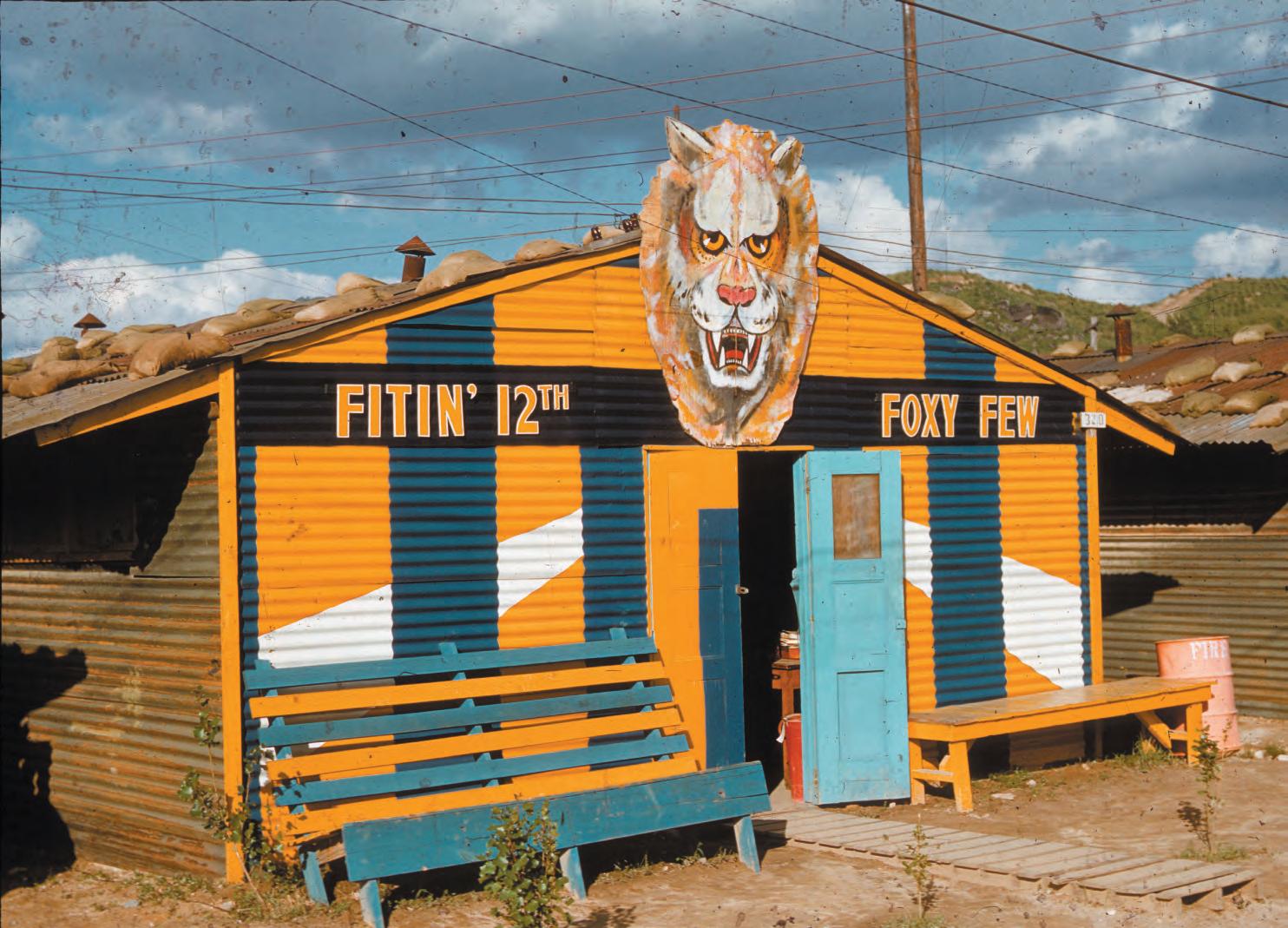 Photograph from the collection of John Mierow, an Augusta, Wisconsin resident who served with the Military Police in the 1993rd Airways and Air Communication Service Squadron during the Korean War. This slide features the operations building for the “Fitin’ 12th” the “Foxy Few”. WVM.1326.I096
Photograph from the collection of John Mierow, an Augusta, Wisconsin resident who served with the Military Police in the 1993rd Airways and Air Communication Service Squadron during the Korean War. This slide features the operations building for the “Fitin’ 12th” the “Foxy Few”. WVM.1326.I096
MUSEUM STAFF M ST


COMMENTS & SUBMISSIONS
welcome your comments and editorial submissions concerning The Bugle. Comments and submissions should be sent to Jennifer Stevenson at Jennifer.Stevenson@dva.wisconsin.gov THE WISCONSIN VETERANS MUSEUM
DIRECTOR CHRISTOPHER L. KOLAKOWSKI | 608.266.1009 ASSISTANT DIRECTOR JENNIFER VAN HAAFTEN | 608.261.6802 OPERATIONS ASSISTANT ELISE MCFARLANE | 608.261.0534 ORAL HISTORIAN LUKE SPRAGUE | 608.261.0537 CURATOR OF HISTORY KEVIN HAMPTON | 608.261.5409 PROCESSING ARCHIVIST BRITTANY STROBEL | 608.800.6958 COLLECTIONS MANAGER ANDREA HOFFMAN | 608.800.6957 REFERENCE ARCHIVIST RUSS HORTON | 608.267.1790 REGISTRAR SARAH KAPELLUSCH | 608.800.6955 CURATOR OF EXHIBITS GREGORY KRUEGER | 608.261.0541 STORE MANAGER GREG LAWSON | 608.261.0535 COMMUNICATIONS & MARKETING SPECIALIST JENNIFER STEVENSON | 608.264.6068 CURATOR OF VETERAN ART YVETTE PINO | 608.266.1854 EDUCATION SPECIALIST ERIK WRIGHT | 608.264.7663 30 WEST MIFFLIN STREET MADISON, WI 53703 ON THE CAPITOL SQUARE 608.267.1799 www.wisvetsmuseum.com MUSEUM HOURS Closed Mondays Tuesday−Saturday 10:00 AM–5:00PM Sunday (April–September) Noon–5:00 PM RESEARCH CENTER HOURS By appointment only 608.267.1790
We
FOUNDATION
PRESIDENT
DAN CHECKI
BOARD OF DIRECTORS DIRECTORS AT LARGE ALEJANDRO ARANGO-ESCALANTE
VICE PRESIDENT
JOANE MATHEWS TREASURER
DAN HEILIGER SECRETARY
TOM HUISMANN
DAN GREENE
WILLIAM F. HUSTAD
TIMOTHY LA SAGE
JOSEPH NAYLOR
PHIL PRANGE
BOB SIMMONS
NATHANIEL T. MILSAP, JR.
FOUNDATION STAFF
EXECUTIVE DIRECTOR


JENNIFER CARLSON 608.261.0536

JENNIFER.CARLSON@WVMFOUNDATION.COM

COLLECTION DONORS
8/10/21–11/12/21


A most sincere thank you to all who donated to our collection from August 2021–November 2021. Thank you for your generosity and support of the Wisconsin Veterans Museum.
Diane Amato
Margaret Arms
Wm. J.K. Beaudot
Karen Cannistra
Bette Delsarte
Jill Feldman
Dave Gilles
Mary Groves
Matthew Hallett
Jim Harvey
Laurel Hefty
Donald Litzer
Clint Miller
Frank Shansky
Dennis Trest
Washburn County Veterans Service Office (CVSO)
Mary Zientara
MUSEUM MISSION
The mission of the Wisconsin Veterans Museum is to commemorate, acknowledge, and affirm the role of Wisconsin veterans in America’s military past and present
The Bugle is published quarterly for our members and friends through the support of the Wisconsin Veterans Museum Foundation. The Wisconsin Veterans Museum Foundation provides funds for the support of artifact acquisitions, exhibit production, and the development of educational programs.
Us Online!
Join
3 Jan 1943 | US soldiers of Co C, 127th Inf, 32nd Div, Buna Mission, New Guinea, reasting after the capture of a Japanese position in New Guinea. Men in forground are examining an old bell; others hold a Japanese sword and flag.


 From the Edward T. Lauer, Sr. Collection, WVM Mss 32.
FROM THE SECRETARY
From the Edward T. Lauer, Sr. Collection, WVM Mss 32.
FROM THE SECRETARY


Greetings, and thank you for your support of the Wisconsin Veterans Museum this past year. This museum is one of our state’s great treasures and is unique in the way that it preserves veterans’ experiences for future generations.
When I travel around the state, I enjoy listening to veterans’ experiences and sharing the powerful stories in the museum’s collections so that everyone can get to know and understand the individuals who served our state and nation and the importance of their role in our state’s history. This is a way I prefer connecting people across the years and it is amazing the impact it has.
On November 4th, we hosted the grand opening of Souvenirs of Service. I am so very proud of our latest exhibit. Wonderful openings like this continue to exemplify the upward dynamic path of our museum offerings and what it offers for veterans and visitors alike. I appreciate how the new interpretive approach of the exhibit seeks to bridge the stories of the civilianmilitary divide in a way that is easy for all visitors to comprehend. I am so appreciative of the vision and leadership that Chris Kolakowski has brought to our museum and the contributions his very impressive team have made to this exhibit and to the museum’s overall direction. My gratitude to each of you and well done!
While we are very proud of our museum and this informative new exhibit, discussions and studies continue about a possible future physical location so we can even better exhibit and share the tremendous stories and legacies of Wisconsin’s veterans. This process is in the very early stages, and we are excited to have a space that will allow us to unleash the expertise and enthusiasm of Chris and his staff regarding our state’s veterans. I share this because we are going to need your support as we move forward.
My thanks to the Wisconsin Veterans Museum Foundation President, Dan Checki, and the museum’s board members for being our partners in this endeavor. I hope you all can stop by and experience this new exhibit for yourself soon!
As we close this year, and look toward the new one, I wish you all a safe, healthy, and happy holiday season.
With shared camaraderie,
 Mary M. Kolar Secretary, Wisconsin Department of Veterans Affairs
Mary M. Kolar Secretary, Wisconsin Department of Veterans Affairs

hank supp hi
 ROM DIRECTO
ROM DIRECTO
FROM THE DIRECTOR
Dear Friends of the Wisconsin Veterans Museum, Greetings! I hope this finds all of you well and safe. The staff and I are pleased to bring you yet another informative issue of The Bugle. Since our reopening on July 1, 2021, we have enjoyed good visitation and excellent sales in the store. People are happy to see us, and we love being able to welcome visitors in the museum. If you haven’t been to see us lately, please come by.
ds of the Wisconsin Vet
We had a great autumn, with in-person Cemetery Tours, West Point’s visit to Camp Randall to play the Badgers, the centennial of the Tomb of the Unknown Soldier on November 11, and the opening of our new special exhibit, Souvenirs of Service: The Things They Kept, on November 4. As I attended these various events, I was continually struck by how veterans’ stories resonate and are a powerful connection and inspiration for people.
Thanks to those of you who were able to attend the exhibit opening and our programs. It was great seeing so many of you in person after many months. Several people remarked on the energy surrounding the museum, which is a product of our elite, professional, and passionate staff. The future is exciting as we enter the new year 2022. In addition to our usual offerings of programs, we are studying the future of the museum. Quite simply, we’ve outgrown this facility and can no longer adequately display our collection and stories. With our partners in the Foundation and in state government, we are considering options and solutions. These are stimulating discussions, with outcomes I hope to share with you soon.
Our virtual programs over the past 18 months have generated quite an audience across the state, nation, and even the world. Though the museum is back open and is doing some in-person programs, we also continue our extensive online offerings. Our online presence is only possible with the help and support of the Wisconsin Veterans Museum Foundation. I encourage ever yone to see what is available at our website, WisVetsMuseum.com.
Best wishes to all of you and thank you for your continuing support. See you at the museum soon.
Best,
Chris Kolakowski

WINTER 2021 9
Gundel “Gundy” Metz was born in Bremen, Germany. Her family moved to the United States when she was 10, settling eventually in Monticello, Wisconsin. She enlisted in the US Army in March 1975 and served in a variety of units and stations. One of her longest duty assignments was with the 101st Division Support Command. She deployed to Germany and Korea with the 2nd Infantry Division. After retiring in 1995, Metz joined the VFW and in 2017 served as the State Commander, only the second female veteran to hold that position in Wisconsin. She saved this gavel, which she used throughout her year as State Commander, as a unique souvenir of her accomplishment. She also became the first female member of the VFW National Council from Wisconsin.
Sterling Schallert, a Watertown, Wisconsin native, joined the US Navy on December 31, 1941. After training stateside, he deployed to Australia in April 1943 to serve aboard LST 465, one of the newly designed Landing Ship-Tank vessels. He served as a supply officer and participated in action at Woodlark, Kiriwina, New Britain, Lae, the Admiralty Islands, Hollandia, and Leyte. In addition to transporting tanks from island to island, his ship also transported troops, including US Army and Marines, as well as Australian troops. It is likely from the latter that he acquired a unique souvenir— colorful Japanese propaganda leaflets that attempted to sow discord among Allied troops by warning Australian soldiers that while they were out fighting the Japanese, American troops were in their homes chasing their wives and sweethearts. There are also undertones of the American government using Australian troops to soften the Japanese to minimize American casualties.
 By: Russ Horton Reference Archivist
By: Russ Horton Reference Archivist
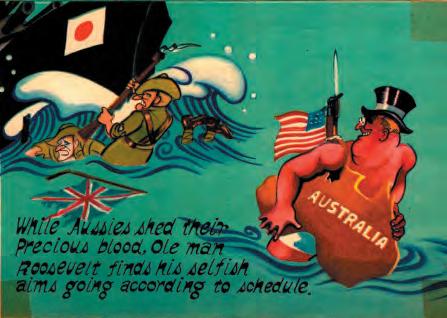


EVERY VETER
AN IS A STORY





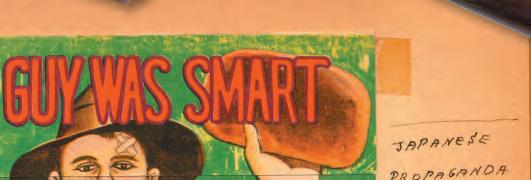














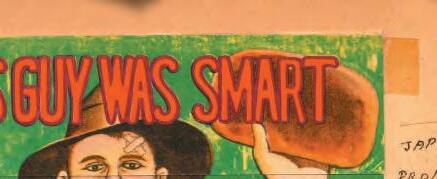

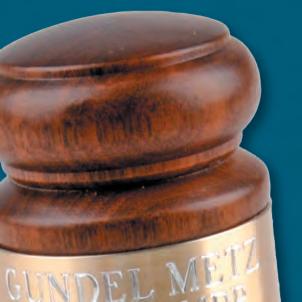






Spending
over a decade working with the museum’s 26,000-piece object collection—time that includes fully inventorying, packing, moving and unpacking every item not on exhibit— has given me a hands-on opportunity to evaluate our collections in their entirety. Since military objects are inherently uniform, any variation—especially manmade changes—tend to draw your attention. When these modifications are then viewed across time, recurring themes and trends become apparent. One particularly enduring custom is the recording of people and places on just about anything a servicemember had at
hand, whether issued, purchased, given, found, or taken.







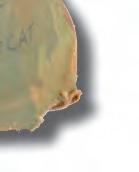










Objects as diverse as a World War I leather wallet belonging to Arthur Boeker with the 6th Sanitary Train, a World War II-era canteen cup carried by Oconomowoc, Wisconsin soldier Harold Duket, a Union Jack from the subchaser USS SC-991 brought home by Herbert Kandziora, or the Korean War-era seabag of Pfc. Robert R. Beilke with the 1st Marine Air Wing, all proved appropriate canvases for recording locales from Athens to Yokohama and everywhere in between. Hand-inked headgear spanning three




12
quarters of a century including a Model 1889 felt campaign hat worn by William Hammond during the Spanish American War, a B-1 summer flying cap worn across North Africa and southern Europe by Sidney D. Tannenbaum during World War II, and a Mitchell pattern reversible camouflage M1 helmet cover carried by Daniel C. Marsden in Vietnam show the more things change, the more things stay the same.
Marking objects in this manner is acknowledging being a witness to history, both big and small. Whether it is fellow members of a unit signing their names










COLLECTIONS FROM THE



on a captured banner or a sailor hand painting an ever-lengthening list of port and island names to his seabag, these actions cement a service member’s place in time. This is one of the many themes touched upon in our new exhibit Souvenirs of Service. But while Souvenirs of Service approaches single pieces to highlight powerful individual stories, looking at groups of materials that show how basic human impulses endure across time and geography can be an equally powerful way to view more than 150 years worth of souvenirs in the Wisconsin Veterans Museum collection.




 By: Andrea Hoffman Collections Manager
By: Andrea Hoffman Collections Manager


WINTER 2021 13
HUMANITY Behin
A Look at the Development
“
The Devil is in thedetails” cliché is a phrase anyone who has managed a project can relate to.

Creating museum exhibits is no different, with one exception: often, the inspiration for an exhibit is rooted in a deep affinity for the artifacts in a collection and the human stories they represent. If you were to speak with the staff who produced the current exhibit, Souvenirs of Service: The Things They Kept, their passion for their work would be evident. That passion, conveyed by every task including selecting stories to tell, cleaning artifacts, preparing displays, designing
graphics, ensuring every wall-mounted photo is exactly level, and pitching the exhibit story to the media may not immediately communicate passion, however a deeper look reveals the love behind the labor.

More broadly, museum exhibits are often planned around anniversaries and what the public may be interested in. When considering what to exhibit the staff at the Wisconsin Veterans Museum seeks to meet the audiences where they are at. Between the obvious anniversaries, such as 100 years since the end of World War I,
are the times when the staff are free to develop exhibits that explore history through a conceptual lens, using emotion rather than a specific date or event to prompt reflection and critical thinking. These types of exhibits offer more creative flexibility for the staff in reaching the guests rather than having to meet a timeline expectation. These are the goals that drove the Souvenirs of Service: The Things They Kept exhibit. The idea for an exhibit including souvenirs seems to have existed since the time of the Hard Rock Café t-shirt collecting craze. Taking a cue from that
By: Jennifer Stevenson Marketing Specialist
ind The HISTORY

ment of the Exhibit Souvenirs of Service: The Things They Kept
categories, such as objects picked from the battlefield or pillow shams collected during World War I? Or could the exhibit be developed around objects that had deep meaning to a person and sharing that story from across eras, branches of service, and relationships? Ultimately, the staff chose not to display objects as categories, but rather made the effort to share the humanity behind the history where the viewer could connect objects on display with memories of their own.
idea, in 2019 Curator of History Kevin Hampton began by asking the staff what they wanted to talk about and posed the question, "What is a souvenir?" To get people thinking they also asked that question of guests during museum programming.

There was much debate among the staff before the souvenir idea solidified. Do they choose artifacts to display based on
Picking the actual artifacts resulted from the brainstorming sessions, many at the State Archive Preservation Facility (SAPF), where most of the museum collection moved from the museum building in 2018 and is now stored. This exhibit was the first for which three of the staff central to exhibit planning worked off-site at the SAPF with the museum collection, which brought new challenges for logistics and communication. Throw in
 Defining what a souvenir is drove the development of the exhibit. This whiteboard in Curator of History Kevin Hampton’s office remains as a guidepost and focus for future additions.
Defining what a souvenir is drove the development of the exhibit. This whiteboard in Curator of History Kevin Hampton’s office remains as a guidepost and focus for future additions.
a new museum director who began during the planning, and the disruption of Covid-19 dispersions, and the entire process threw challenges at the staff beyond anything they’d previously encountered.
HOW TO DECIDE
The resulting exhibition melded those pre-existing lists with personal experience of staff to cast the look of the present exhibit. Once the idea of what a souvenir is was determined, Archivist Russ Horton, Collections Manager Andrea Hoffman, and Processing Archivist Brittany Strobel were charged with creating suggestions for potential objects and stories to include and presenting them to the interpretive team. Each subject matter expert considered objects that had been on their minds to represent our veterans’ stories.
As the collections manager, Andrea Hoffman works directly with the physical objects that the museum holds from covers to boots, arms to pillow shams, and any non-paper objects in between. In recommending artifacts for the exhibit, Hoffman sought to take the idea of the trite, mass-produced souvenir and turn it on its head.
She explains her passion for the artifacts she cares for:

“The Wisconsin Veterans Museum is not like an art museum. The value of the artifacts cannot be enumerated; the beauty cannot be judged aesthetically. I wanted them (guests) to look at an object that was unexciting or mundane and show that all the interest in it is in the story behind it. These objects have worth because of the story they tell.”
One such mundane object, a rusted compass needle, will go on view in 2022.
Alone, the needle looks worthless, but it meant freedom for the escapee of a WWII POW camp who used it to navigate to safety. Ultimately, Hoffman tried to challenge the idea of what’s significant.
“Why we save the things we do and why what we do here is important. It’s our job to ensure these stories are heard.”
Prior to Russ Horton’s current duties as reference archivist, he worked with the collection objects, and so he knew the collection stories well. From his viewpoint, sharing the story of a pair of beaded buckskin trousers given by Bill Cody to Charles King illustrated one of the reasons why we keep things. Horton explains, “King valued these trousers because they were the last physical connection he had to a close friend. They are a souvenir of friendship.”
This exhibit gave the archives the opportunity to be a featured part as a main component. This concept challenges the staff and the visitor to think beyond the souvenir as a trinket. Now, a photograph at the Sphinx, a telegram saved from the day after Pearl Harbor, and the selfie are souvenirs of memory.
16
Museum Director Chris Kolakowski works with museum staff on object placement in a wall case.
As the processing archivist, Brittany Strobel handles all things paper from photographs and letters home to newspapers and scrapbooks.
From her perspective, “Anything that survives to get to me is a souvenir. Anything that lasted long enough to be donated to this museum, I could make an argument for, which I did, and that’s why there are reproductions of photographs and scrapbooks in this exhibit. These are souvenirs.”
To begin her work, Strobel inherited a list, but also searched “souvenir” in the database as she combed the museum collection for the deeper story. Some of the photos she found were good filler for the exterior of the room to enhance a narrative. For example, the POW coat on view is given context with recently acquired photographs of POWs wearing coats. Other archival materials are related to objects in the collection and add depth to the story, like the “Happy Landings Doll” from Harold C. Brown that he kept with him as a good luck charm. The archives added to the display his photo and a letter to his mother with his reflection on the war.
Once the planning group decided that the veteran’s story was the single most important criterion for exhibiting an object, and lists were compiled, the logistical work to safely display an object or archival material factored into what went on view. The list went to Registrar Sarah Kapellusch to review for condition and suitability for exhibition. Very few of the chosen objects were eliminated because of concern over fragility. Others, like the World War I mandolin, went to a conservator for repair which included
removal of adhesive, resetting loose inlays, and repositioning a string, all to ensure the instrument would remain healthy during the exhibit.

For some archival materials, the staff had to work out how to safely display them for an exhibit that will be open all of 2022. The telegram dated December 9, 1941 that Rhoda Ziesler sent home to her family in Manitowoc from Hawaii is too fragile to display for the entire exhibit due to light levels, and yet it is central to the story of the nurse who served during the attack on Pearl Harbor. The staff created the reproduction that is on view. In total, Curator of Veteran Art Yvette Pino and Marketing Specialist Jen Stevenson laid out reproductions of more than 200 photos and documents from the collection to line the walls of the exhibit gallery.
Beyond archival materials enhancing the stories of the objects, the archivists in the oral history area sprinkled their own magic into the Souvenirs mix. Throughout
the gallery, Oral Historian Luke Sprague added voice recordings to displays to layer another dimension to the stories. Guests can hear the veteran’s memories about
WINTER 2021 17
Hearing a story in the veteran’s own words is central to bringing humanity to the history. Oral Historian Luke Sprague installs motion sensors to trigger audio clips throughout the exhibit.
As



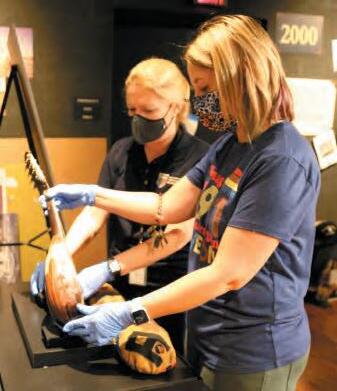



from
to
(and
18
does everything
artifact preparation
media relations, great care
10 rolls of Gorilla Tape) goes into ensuring that the layout of the cases is on point. Staff weighing in on this case are Processing Archivist Brittany Strobel, Curator of Exhibits Greg Krueger, Collections Manager Andrea Hoffman, and Director Chris Kolakowski.
To protect the artifacts, staff installs plexiglass vitrines over the pedestals and wall cases. Buckskin trousers, once owned by William “Buffalo Bill” Cody, take cover with the help of Education Specialist, Erik Wright Curator of Exhibits Gregory Krueger, and Curator of History Kevin Hampton.
(Left) Registrar Sarah Kapellusch and Collections Manager Andrea Hoffman set a mandolin and case collected in WWI France. The mandolin was one of the objects that needed to visit a conservator to prepare it for exhibition.
(Right) A gallery in transition reflects the varied tools and talents the staff bring to the installation.
Curator of History Kevin Hampton was the go-to team member for media interviews. Television, radio, and news media across the state took an interest in the stories told in the exhibit
the artifacts in their own voices; the oral history becomes a souvenir as well.
FROM TRINKETS TO RELICS

A discussion of the best way to organize the gallery for the Souvenirs of Service exhibit, ran concurrent with choosing the objects on view. Although the team was limited by physical space and display cases, preparing content relevant to the viewer remained paramount. As the staff embraced the definition of a souvenir as something that triggers a memory, the exhibit layout was planned around the idea walking through a grandparent’s attic hearing the stories of the family heirlooms.
The cases are intentionally set at varying heights and facing different directions to elicit a feeling of meandering through a memory for the viewer. Outside walls of the exhibit show souvenirs we would expect—the things one would find in a gift shop. On the interior floor space guests will notice one object in each case is illuminated and that is all. The lighting is meant subconsciously to signal to the
visitor “this is important.” These are the well-documented, meaningful stories where the interpretation is meant to bridge the military-civilian divide and compel the visitor to want to know the person behind the story—something they cannot find through Google.
Hampton explains, “That’s why the title is important-Souvenirs of Service: The Things They Kept. Some things are important just because they survived. All of us can consider the point when something we have elevates from a trinket with no value to a relic that is almost holy to you because it is the last physical connection you have to a person. The more time passes the more that relic nature evolves, especially as the story reveals itself to us. And that’s what we at the museum are charged to do, preserve the treasured stories of our veterans for future generations”
Souvenirs of Service: The Things They Kept will remain on view through 2022.


Store.WisVetsMuseum.com



















20
By: Russ Horton Reference Archivist
Earl Ganzow, a Fort Atkinson, Wisconsin native, traveled far from his home state while serving in the Army during World War II. Initially training in places like Virginia, Tennessee, and North Carolina, he deployed to Europe and served in the countries of England, France, Belgium, and Germany. Like many American soldiers, Ganzow collected souvenirs during his service that both documented the places in which he served and allowed him to share his experiences with his family back home.
The Wisconsin Veterans Museum has hundreds of letters that Ganzow wrote to his wife, Marian, during his World War II service, some of which describe collecting souvenirs and sending them home. Our museum also has many of the souvenirs that he sent home. All that combines to provide a very interesting and personal look at souvenir collecting in the military through the eyes of Earl Ganzow.
Postcards, travel guides, and other place specific items helped Ganzow show his wife and family some of the places he visited. A postcard set from Richmond, Virginia that contains color images of prominent buildings and other sites in the city is a good example of this type of souvenir. After he deployed to Europe, Ganzow collected and sent home a travel guide from Chaumont, France and picture postcards from Liege, Belgium. After the war ended and he was preparing to return to the States, he noted on an official Army guide to Reims, France that he had been in the city, and it was “OK.”
Ganzow occasionally purchased souvenirs for his wife or a family member.
On November 14, 1944, he wrote to Marian, “And darling I even pick[ed] you up a nice little souvenir, I am sending it tomorrow morning, it’s from Belgium. Can’t tell you what it is, but any way I hope you’ll like it.”
Unfortunately, this souvenir gift remains a mystery and is not in the museum’s collection.
He also wrote about another type of souvenir, not tied to a place or as a gift for a specific person, but to commemorate the experience of fighting in a war and defeating an enemy. On October 28, 1944, he wrote
“I have a few souvenirs to send home as soon as I can get them packed. We took over a few pill boxes and I found a few things that the Gerries left behind there.”
The museum’s collection has many of these souvenirs that Ganzow sent home, such as German pins, badges, belt buckles, and currency. WVM also has a larger item that he mentioned specifically in a December 7, 1944 letter.
“Say, did you ever get that sword I sent home? That was taken from a pill box we took over in Germany here. I hope you get that alright, too.”
The Earl Ganzow collection, both letters and objects, provide an interesting insight into souvenir collecting in World War II. Learn more about souvenirs that other Wisconsin veterans collected, from the Civil War to the present, by visiting the museum to see Souvenirs of Service: The Things They Kept.
NEW YEAR | NEW L
Since the museum reopened last July, the staff has rolled out several enhancements we’d been working on for the past year and a half. We hope you’ve had a chance to check them out, including a new, refreshed approach toward interpretation in our permanent galleries and a brand new temporary exhibit, Souvenirs of Service, that’s been in the works for several years.
Along with the enhancements in the galleries, you also may have noticed a new museum logo. Similar to our new exhibit, this project has been a long time in the making. The logo design may appear simpler than its predecessor, but much like the heraldry designs of unit insignias, there is a lot of intentionality and meaning stitched into it.
The Shield
Evoking the imagery of the Civil War era, the shield represents not only our past as an institution— a museum founded by Civil War veterans for the people of Wisconsin— but reminds us that at the heart of service is a willingness to defend our country and our fellow citizens.
The Colors
The muted color scheme represents the crossroads of memory and memorial, of legacy and of learning. It promotes reflection and understanding and evokes a feeling of comfort and approachability. After all, we preserve stories so that the memory of all those that have served may live on for generations to come.
The Six Stars and The Six Stripes
The six stars and the six stripes represent the future. As we reflect on all those that have served in the past, we are reminded of that unspoken bond to all those serving now and that will serve in the six branches of service: Army, Marine Corps, Navy, Air Force, Space Force, and Coast Guard.
22
LOOK | NEW LOGO
 By: Kevin Hampton Curator of Historyt
By: Kevin Hampton Curator of Historyt



WINTER 2021 23
Civil War era envelopes. WVM Mss 1839
HONOR ROLL | A most sincere thank you to all who gave a gift in honor or in memory of a veteran, friend or family member in your life in 2021. Thank you for honoring their legacies.
Anderson, SGT Gordon, honored by Rod Anderson
Antonneau, CPL Robert William, honored by Jan (Antonneau) Anderson
Berry, Richard, honored by Madison History Roundtable
Bieniek, SGM (Ret) Brian, honored by Vicki & Tony Passante
Boris, CPT Dave, honored by Christopher Kolenda
Bostick, MAJ Tom, honored by Christopher Kolenda
Brink, James, honored by Ann Brink
Burhyte Corey, John, honored by James Parker
Buschman, SGT Harold, honored by Edward & Sally Nyberg
Cherney, PVT Robert, honored by Jan Anderson
Crawford, Sherman, honored by Karen Crawford
Crawford, Phil, honored by Karen Crawford
Dantoin, LTC Chris, honored by COL Paul Joseph Hettich
Dean, Rexford John, honored by David Dean
Doughty, COL Daniel, honored by Cheryl Heiliger
Dunford, George “Dutch”, honored by Linda Imhoff
Englesby, Philo, honored by John Englesby
Evans, John Arvid, honored by John Sheski
Gerstner, Kenneth, honored by Jo Kubina
Gove, Ransom, honored by Ariel Blondet
Gruennert, SGT Kenneth, honored by James & Joann Gruennert
Haight Family Veterans, honored by Jim Haight
Hessing, CPL James, honored by Ronald Spielman
Hettich, COL Paul, honored by COL Paul Hettich
Heiliger, Sr., Donald, honored by Don Heiliger Jr. & Ron Martin
Hermanson, Lawrence, honored by Merry Anderson
Hinds, Jr., Paul, honored by Sarah Bro
Hinkins, William, honored by Jean King
Hinz, Loren Martin, honored by Gretchen Wronka
Jackson, Homer, honored by Larry White
Jackson, Melvin, honored by Larry White
Jackson, Kenneth, honored by Larry White
Jackson, Earl, honored by Larry White
Karis, James, honored by RJ & Joan Karis
Koeppen, Ronald, honored by John Koeppen
Koeppen, Jarold, honored by John Koeppen
Koziczkowski, John, honored by Daniel Koziczkowski
Laabs, Kevin, honored by John & Marilyn Olson
Lamb, Dr. Luke, honored by Mary Beth Lamb & Mary Griffin
Lerdahl, Bob, honored by Lynn Calloway
Lopez, Rochelle, honored by Erika Ceballos
Luther, Clayton James, honored by Robert Luther
Magalske, Jerome, honored by Randall Stutzman
Majka, John, honored by Andy & Roxanne Majka
Miller, Gerald, honored by Nancy Miller
O’Malley, Lorraine Ann, honored by George Banda
Parker, TSGT Gervase, honored by James Parker
Pierce, Sr, Edward, honored by Edward Pierce, Jr
Platz, William, honored by John Sheski
Raftery, Jr, William, honored by Madison History Roundtable, Second WI Volunteer Infantry Company K, Erin Hampton, Warren, Mary and Colin Honkola
Richards, SGT John, honored by Richard Rattenbury
Rowe, Charles, honored by Sandra Rowe
Schellpeper, Charles Roger, honored by Suellyn Rohrer
Schmitz, Harold, honored by Linda Devitt
Sheski, Thomas, honored by John Sheski
Sheskey, John, honored by Angie Sheskey
Simmons, Robert, honored by Jeffrey Curtis
Stelzel, Caroline, honored by the Artist Preservation Group, Inc.
Vietnam Veterans, honored by LTC (Ret) Daniel Staab & Dennis Kinney
Ward, Thomas Stephen, honored by Mary Ann Ward Decatur
Wilkening, MAJ GEN Albert, honored by Patricia Wilkening & COL (Ret) Robert Ronge
Wise, PVT Brett Marlow, honored by Mitchell and Roslyn Wise
Wolf, Fritz, honored by Richard & Majorie Wolf
Zehren, Roy, honored by Geri Zehren
Zeitlin, Dr. Richard, honored by James & Carol Kelly
24
As we begin a new year, I would like to take this opportunity to thank our members for their support during the challenging year that just passed. We were excited to reopen last July 1st, and our supporters were quick to respond as we opened our new exhibit, Souvenirs of Service, in November. We are all grateful for your support of the golf outing as well. 2022 will be an extraordinarily challenging year for our Foundation. We will be initiating our capital campaign with a goal of raising $20 million for the construction of a new and significantly expanded Wisconsin Veterans Museum. We believe the moment is right for the campaign as we are at an important crossroad in our nation’s military history. We have ended our long involvement in the Afghan conflict and look to the significant buildup of military strength by other nations as a troubling development. According to media reports our government is focusing on a redeployment of more of our forces to the Pacific.
As we all try to make sense out of these international events it is imperative that we understand their impact on our individual military families. Our fellow citizens are the soldiers, sailors, airmen, and marines placed in harms way when we deploy our military forces. If our citizens are expected to support the exercise of our military power when necessary, they must be conversant in the consequences of those decisions to our fellow citizens who serve in the armed forces.
Your Wisconsin Veterans Museum is a unique home where the personal stories
and experiences of our veterans are the focus of our collection. This is not a museum designed to tell the story of a particular conflict or war. It is a museum dedicated to narrating the individual experiences of those men and women who served our nation in times of war. As faithful readers of The Bugle and donors to the museum you understand our mission. This is the moment, however, at which we must make a maximum effort to expand the audience for our story. I believe our collection and the venue in which it is housed will make a significant contribution to the understanding necessary for our citizens and politicians to make decisions impacting our future as a state and as a nation.
It is considered appropriate now, when people meet a veteran, to thank them for their service. We have the responsibility and the honor to ensure that the people of Wisconsin know and appreciate what that service was, and a new Wisconsin Veterans Museum will be the place they go to find out.
So once again let me thank you our donors and supporters for your service to the Wisconsin Veterans Museum and let me appeal to you to help the Foundation fund the construction of a new and expanded home for our story.
In gratitude,
 Daniel Checki Foundation Board President
Daniel Checki Foundation Board President
WINTER 2021 25 FOUNDATION PRESIDENT FROM THE
10 BOOK TALK
14
Mark Your Calendar
12:00–1:00PM
Annette Langlois Grunseth—Combat and Campus: Writing Through War—An infantryman's riveting letters from Vietnam, preserved for 50 years by his family, are coupled with his sister’s view of life at home to offer a unique perspective of the war.
VIRTUAL DRINK & DRAW
7:00–8:30PM
Sumi Ink Painting with Army Veteran Guest Artist Amber Zora.
Gather your art supplies, pour yourself a beverage, and bring your artistic energy as we spend the evening together stretching our creative muscles.
TRIVIA NIGHT
18
20
7:00–8:00PM
Join us for our virtual trivia night and test your historical knowledge. Individuals and teams welcome.
MESS NIGHT
5:30–8:00PM
Please join us for our quarterly dinner series with Shayne Jarosz, Director of Special Events for the Iwo Jima Association of America
28
MOVIE NIGHT
7:00–8:00PM
Female Agents (2008)
Grab some popcorn and a seat in your favorite chair and join us for a virtual discussion of the selected movie with the Wisconsin Veterans Museum staff.
FEB BOOK TALK
7
12:00–1:00PM
Mark Trapp—A Destiny of Undying Greatness: Kiffin Rockwell and the Boys who Remembered Lafayette—A look at the boys who volunteered to fight in France while the U.S. sought neutrality.
11 FEB
VIRTUAL DRINK & DRAW
7:00–8:30PM
Gather your art supplies, pour yourself a beverage, and bring your artistic energy as we spend the evening together stretching our creative muscles.
TRIVIA NIGHT
7:00–8:00PM
Join us for our virtual trivia night and test your historical knowledge. Individuals and teams welcome.
21 25 28 MAR
7
CURATOR CONVERSATIONS
12:00–1:00PM
How Much Can A Human Being Endure? Shell Shock in World War I - Reference Archivist Russ Horton will address the phenomenon of shell shock during World War I.
MOVIE NIGHT
7:00–8:00PM
Shout at the Devil (1976)
Grab some popcorn and a seat in your favorite chair and join us for a virtual discussion of the selected movie with the Wisconsin Veterans Museum staff.
BOOK TALK
12:00–1:00PM
Mark Trapp—A Destiny of Undying
Greatness: Kiffin Rockwell and the Boys who Remembered Lafayette—A look at the boys who volunteered to fight in France while the U.S. sought neutrality.
BOOK TALK
12:00–1:00PM
Diane Amato— All the News from Home: A World War II Story of Family, Loyalty, and Love—All The News From Home is based on 368 government issued V Mail letters sent to Joseph G Amato (George) while he was stationed in England as an embalmer for the United States Army during WWII.
*For detailed information and registration visit: WisVetsMuseum.com/events
JAN
15
$38 Members | $46 Non-Members | $30 Students (W/ID)
Iwo Jima: The Iconic Battle and Legacy
THANK YOU DONORS
A most sincere thank you to all who donated from September 2021 through end of November 2021. We cannot provide quality programming and award-winn ing exhibits without your help.
Dane County Nonprofit Assistance Fund, a component fund of The Madison Community Foundation
The Presto Foundation
Hoffman Manufacturing
Corporation
Wisconsin Humanities
Council
Artist Preservation Group
Banda, George
Berry, Christopher
Bonack, Donald
Brodd, Thomas
Curtis, Jeffrey
Hustad, William & Jackie
Johnson, Fred
North Central Group
Schrag, Beverly
Stelzel, Mike
Sub-Zero Wolf Foundation, Inc
Van Kauwenbergh, Gary & Darlene
Whittow, Richard
Alley, Jr, Ronald
American Legion Post 0348 (Olson-Grinde Post)
Anderson, Jan
Anderson, Merry
Andrews, John
Angevine, James
Argue, Brad
Baker, Michael
Baldwin, Michael
Bartz, COL (Ret) Claudia
Beckerleg, Steve
Benson, Bonnie
Berens, Todd
Bernards, Cathy & Donald
Berry, Richard
Bieniek, Brian
Blau, Conrad
Blessed Sacrament School
Block, Jamey
Blondet, Ariel
Borgkvist, Thomas
Boullion, James
Bradley, Bruce
Brink, Ann Catherine
Bryant, Mae
Bublitz, James
Bull, Ronald
Burkart, Andrew
Burton, Nancy
Calloway, Lynn
Casey, Jr, John
Cesar, Richard
Clarke, John
Deeken, Michael & Johanna
Devitt, Linda & Patrick
Disabled American Veterans
Chpt. 53
Dunn, Thomas & Joan
Ely, Michael
Engeler, Jr, James
Englesby, John
Engling, Timothy
Estrada, Pablo
Fahey, Kathryn
Feldt, Gary & Mary
Finnemore, John
Flatley, Tim
Foley, Linda
Foss, Jim
Fred A. Schaefer Post
Auxiliary
Geigner, Ralph
Good Shepherd Post 1329
Goodman, Walter
Grabowski, Ervin
Gregg, Bruce & Marsha
Griffin, Mary
Gruennert, Jim & Joann
Hagen, Scott & Natalie
Hall, Phillip
Harned, Lewis
Heiliger, Dan & Tarah
Henry David Thoreau
Elementary
Heuer, LT COL (Ret) Martin
Hogan, William
Holland, Suzann
Horton, Robert
Hubbard, Jake
Icke, John & Karen
Imhoff, Linda
Isensee, Natalie
John F Bird Accounting, LLC
Kafka, Daniel
Kallas, Phillip & Priscilla
Kampen, Sharon
Kenosha Public Museum
King, John
Kinney, Dennis
Knox, Kathleen
Koziczkowski, Daniel
Krueger, Cal & Susie
Kubina, Jo
LaFarge High School
Lamb, Lynette
Lamb, Mary Beth
Larkin, Bruce & Rose
Laux, Daniel
Lawlor, Christopher
Leetz, Daniel
Lemke, Ralph
Leverance, James & Jane
Lewis-Hunstiger, Martha
Ligocki, Clarence
Lindeman, Roy & Dorothy
Liskey, Marley
Lobeck, William
Lucke, Paul
Luther, Robert & Joann
Marino, Allan
Markert, Bruce & Kathryn
Martinelli, Thomas
Mawhinney, Gary
McCormick, Frederick & Ginny
McFarland & Company Inc. Publishers
Melancon, David
Morris, Terrell
Mueller, Tom
Naylor, Daniel & Mary
Nemke, James & Karen
Nowicki, Edward & Edith
Olson, John & Marlene
Olson, Peter & Cheryl
Osborne, Gerald
Pagac, Jon
Peace Evangelical Lutheran
Church
Porth, Guy
Powell, John
Powers, Brian
Prahl, Mary
Pribbernow, Charles
Race, John & Rita
Rasche, Pamela
Reichmann, John
Richardson, Kenneth & Julia
Rogers, Sue
Ronge, Robert & Sherri
Schallert, Nancy
Schedler, Jonathan & Jo Ann
Schellpeper Rohrer, Suellyn
Schlappi, Ed & Kathleen
Schmidt, James
Schroeder, John
Schuette, Dan
Shaw, Pat
Sherven, JoAnn
Sheski, John
Siegert, Marvin & Judy
Simenz, Susan
Smith, Ken & Linda
Smith, Lanny & Margaret
Sommers, Mike & Mary
Sprague, Luke
Staab, Daniel
Stenavich, Anna
Stone, Vivian
Sweeny, Bruce
Tillema, Dean
Tompos, Lori
VFW Post 11244 (Waunakee
Memorial Post)
Vietnam Veterans of America
Voss, Dale & Sharon
Waller, Ellis
Ward Decatur, Mary Ann
Warren Lee, Leslie
Wartolec, Walter
Weier, John & Anita
Weiner, John
Werve, George
Westbury, David
Whitfield, Gerald
Whittow, Alyce
Wisconsin Vietnam Vets, Inc.
Wren, Christopher
Yuska, Ken
Zimbric, Gerald & Hazel
27
CALL 608.261.0536 or JOIN ONLINE at WWW.WISVETSMUSEUM.COM Click on Join | Give GIVE the GIFT of MEMBERSHIP Today! THE WISCONSIN VETERANS MUSEUM 30 WEST MIFFLIN STREET MADISON, WI 53703














 Photograph from the collection of John Mierow, an Augusta, Wisconsin resident who served with the Military Police in the 1993rd Airways and Air Communication Service Squadron during the Korean War. This slide features the operations building for the “Fitin’ 12th” the “Foxy Few”. WVM.1326.I096
Photograph from the collection of John Mierow, an Augusta, Wisconsin resident who served with the Military Police in the 1993rd Airways and Air Communication Service Squadron during the Korean War. This slide features the operations building for the “Fitin’ 12th” the “Foxy Few”. WVM.1326.I096










 From the Edward T. Lauer, Sr. Collection, WVM Mss 32.
FROM THE SECRETARY
From the Edward T. Lauer, Sr. Collection, WVM Mss 32.
FROM THE SECRETARY


 Mary M. Kolar Secretary, Wisconsin Department of Veterans Affairs
Mary M. Kolar Secretary, Wisconsin Department of Veterans Affairs

 ROM DIRECTO
ROM DIRECTO

 By: Russ Horton Reference Archivist
By: Russ Horton Reference Archivist




























































 By: Andrea Hoffman Collections Manager
By: Andrea Hoffman Collections Manager





 Defining what a souvenir is drove the development of the exhibit. This whiteboard in Curator of History Kevin Hampton’s office remains as a guidepost and focus for future additions.
Defining what a souvenir is drove the development of the exhibit. This whiteboard in Curator of History Kevin Hampton’s office remains as a guidepost and focus for future additions.




























 By: Kevin Hampton Curator of Historyt
By: Kevin Hampton Curator of Historyt



 Daniel Checki Foundation Board President
Daniel Checki Foundation Board President